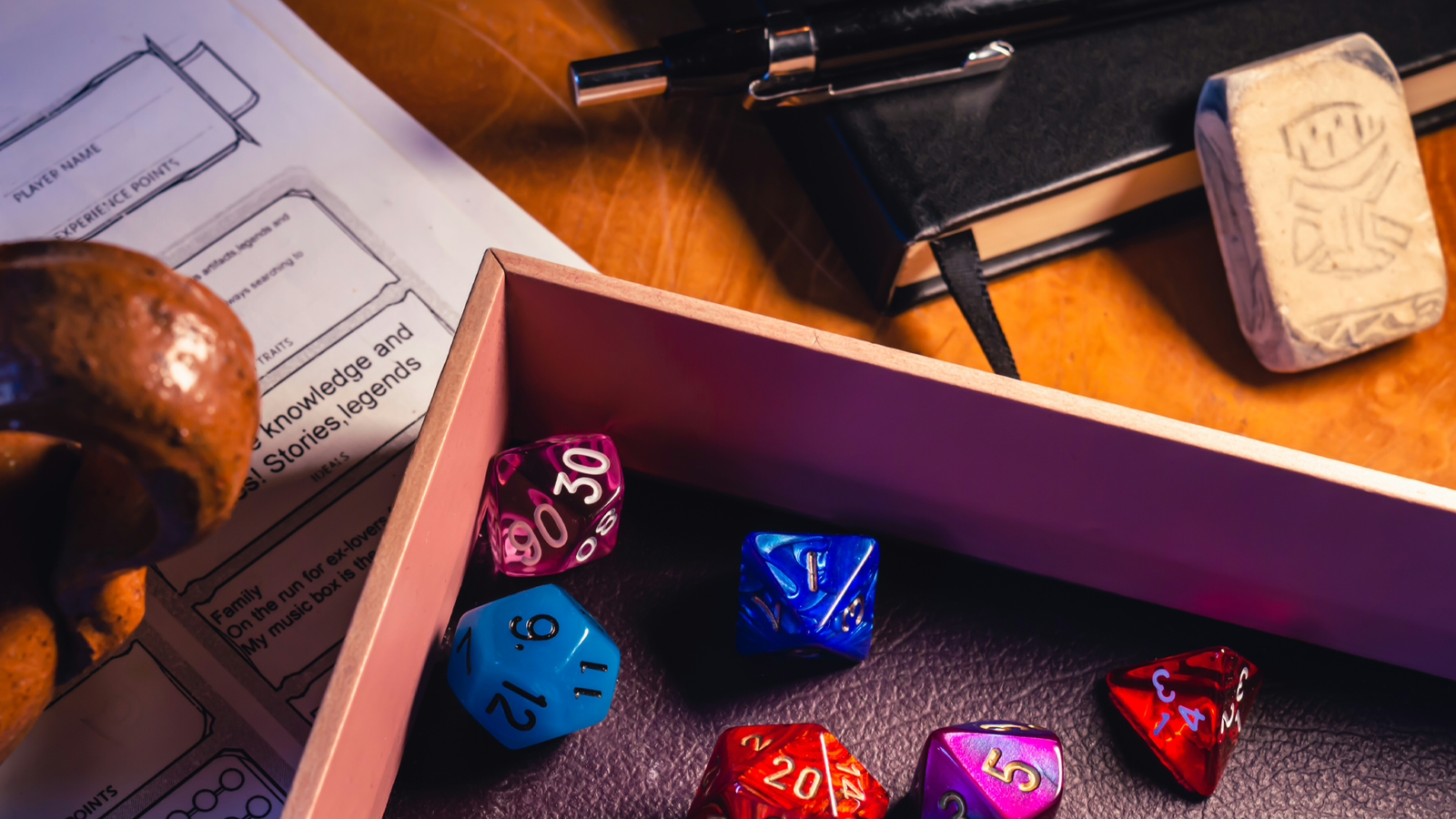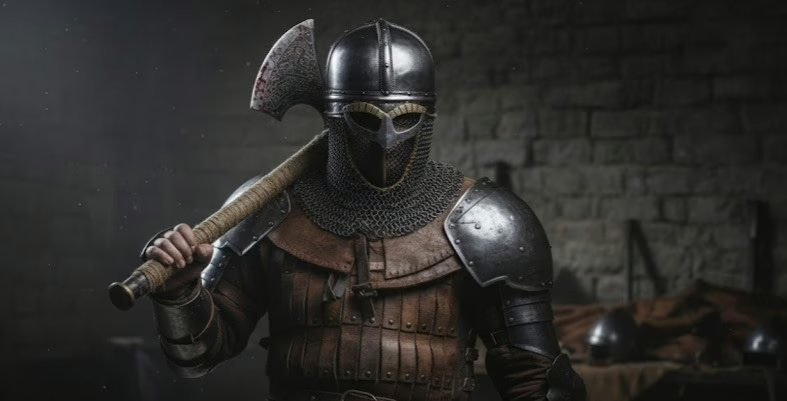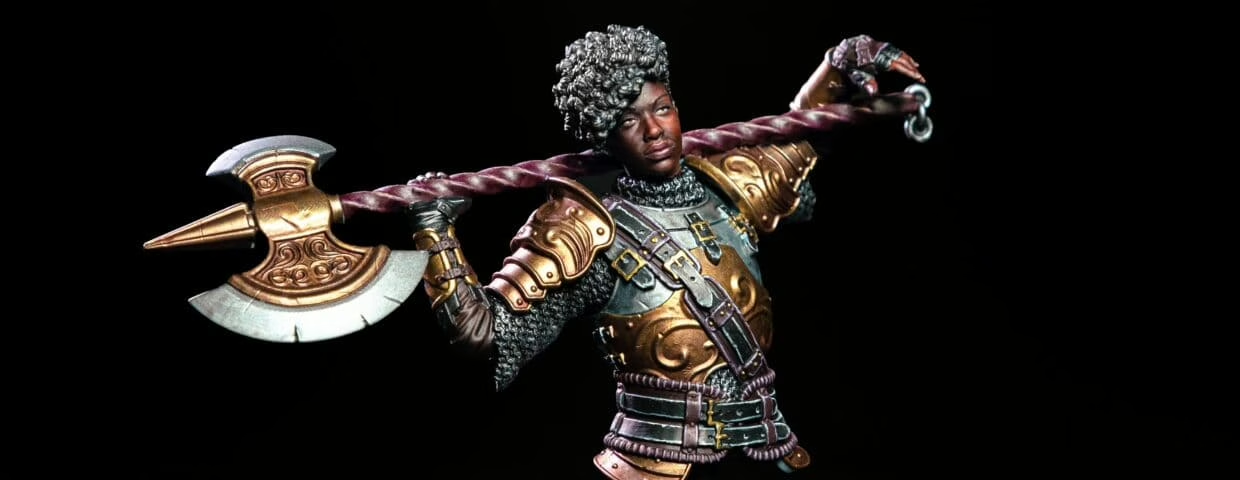How to Make NPCs Stand Out
Creating Memorable Non-playable Characters for Your RPG Campaigns

Players that like RPGs for the role-playing aspects of it often talk to every NPC they can, whether playing live or online. Meeting new characters, hearing their backstories, trying to outsmart them, and trying to solve their problems are all part of the fun. They’re a door to a deep dive into the world the DM created for them. However, when NPCs are shallow, uninteresting, or just way too reticent, even these dedicated players might find the experience boring and skip entire quests, just to rush into combat encounters. Sometimes, the DM is no exception either, leaving the interaction on an awkward foot, and struggling to create compelling NPCs that can highlight their carefully crafted story.
NPCs also help to ground players in the world, as these characters can have feelings, lives, and passions, and often make players feel the weight of their actions towards them (i.e., discourage them from butchering an entire village just to see what happens). They’re the DM’s direct voice, and to make this voice be heard, it’s important that someone wants to listen to it first. Creating compelling characters is a challenge on its own, but with the right guide, it can be as simple as doing a checklist and letting creativity flow. Here’s a quick guide on how to make an NPC stand out and how to grab players’ interest for either DMs or any creative individuals who love storytelling.
The Basics
When struggling to create a character, it’s best to start by reviewing the basics. There’s no shame in it, as even the most experienced storytellers need to check it once in a while, and a strong foundation makes for easier character development. The basics of character creation are covered, in detail, in the article, RPG: Character creation for dummies. It presents tools for character creation, teaches how to define a personality, explains why alignments make things more interesting, and why setting a goal for the character is so important. After that, characters will have a solid base to be put in-game as they are. The next step is to give these characters more depth and a more appealing presence.
How to create compelling NPCs
Creating a character that breathes life into your world is easier than you think. It’s not about writing a novel for every tavern keeper or guard; it’s about adding a spark of humanity that makes them memorable. A compelling NPC is a tool for storytelling, a character that can challenge, assist, or simply amuse your players, making the shared narrative richer. These next steps will help you forge NPCs that resonate with your party long after the session ends.

Create a Recurring Cast
Meeting random NPCs who disappear after a quest is standard in RPGs, but when a campaign features only temporary characters, it’s hard for players to believe those meetings matter. Consequences often fall short, and creating meaningful bonds won’t feel worth the effort if those NPCs won’t reappear later. This problem is compounded when sessions are sparse, or when there are too many characters for players to remember. The solution is simple: create a select few NPCs who reappear consistently. Start by defining why players should meet them: do they offer relief, sell equipment, drive the plot, or provide a recurring challenge?
When creating these memorable characters, ensure they are useful but also possess interesting personalities and quirks that make players want to interact. Think about good reasons for the players to hang out with them, and equally good reasons why they can’t stay forever; this makes their company more appreciated. It’s also a powerful tactic to give these recurring characters strong connections. Consider how influential they are, and how their ties can aid the party. Whenever possible, tie different NPCs to individual player characters and their backstories. This creates a personal feeling that makes the player more invested in that relationship. Just remember that NPCs shine through present actions and immediate utility, so save the long backstories for the players.
Presentation Matters
Relevant NPCs should leave a cool impression on players, whether it’s epic, dramatic, or subtle. Their arrival can come with a different soundtrack or a unique way to speak with the party. Remember to describe their visuals, their outfit, and easy-to-spot mannerisms, as it will make them easier to recognize and remember later. NPCs don’t have to be humanoid. In fact, they don’t have to be alive either. Picture a spectral dragon giving quests to the party, guiding them to perform its rebirth. The fact that this NPC is not a generic wizard man can already capture the players’ attention. Keep in mind that variety makes for more memorable encounters, even with mainstream plots or one-shot campaigns. This includes species, classes, and everything else about a character.
Name and Characteristics
Every great character starts with a name, but don’t let it be just a label. A name can hint at a character’s origin, social standing, or even their personality. Beyond the name, give them one or two distinct characteristics that stand out. Is it a peculiar accent, a nervous twitch when they lie, a prized possession they always carry, or a unique physical feature? These small details are hooks for your players’ memory, transforming a generic “blacksmith” into “Borin, the one-eyed smith who constantly polishes his silver hammer.”
History and Future
An NPC doesn’t just exist in the present moment. They have a past that shaped them and aspirations for the future that drive their actions. This doesn’t need to be a detailed biography; a few key points are enough. Where did they come from? What is a significant event from their past? More importantly, what do they want to achieve? This gives your NPC motivation beyond serving the players’ immediate needs, allowing for dynamic interactions and unexpected plot developments when their goals align or conflict with the party’s.
The Beauty in Absence
Curiously enough, an NPC can be interesting without ever appearing in the game. Their absence in the story just makes it all the more intriguing, making players wonder if they’ll ever see them during the campaign, and get excited at finding out more about this character. It can be a presence that lingers, a god, a tale that marked the world and folks remember it to this day, or a person that the party should have met during a quest but disappeared moments before.
It’s important to settle this character as someone important to the world or to the quest while denying the party to directly interact with them. This type of character is often tied to interesting rewards and lore, so it’s best to keep their name appearing from time to time. On the other hand, it’s even better if the party happens to forget a bit about this character, only to suddenly find them right in front of them.
What do NPCs need
Non-Player Characters (NPCs) are the lifeblood of your world. They are more than just walking quest markers or combat fodder; they are essential cogs in your storytelling machine. To make them feel real and memorable—to make them stand out—you need to give them needs that drive their actions. These needs translate directly into powerful plot hooks and memorable interactions that deepen your players’ investment in the world.

Charisma
Charisma adds another level of depth to characters, as it’s an independent factor from their morals, alignment, and goals (e.g. a cruel villain and a peaceful shopkeeper can be both incredibly charismatic), and there are three ways of achieving charisma in RPG:
The character acts in a charismatic way
This is up to the DM to define what they consider charismatic traits and act that way, as well as up to the players to perceive the character as charismatic. Although being the hardest option, it’s certainly the most fun for those that like to roleplay.
The world loves the character
Their acts are not particularly amazing, but everyone seems to see them as charming and charismatic. If this world believes in it, players will likely believe it too. It’s a good alternative if the DM doesn’t want to actively roleplay this character.
The DM said so
Period. The DM narrates how the party perceives the character, and players just have to follow that line. This is almost like giving direct knowledge to players about this character, without the need for interactions, and it’s similar to a perception check.
These methods can be complementary to one another and are just ways of delivering the same message. Charisma can be a wonderful tool to create more complex and morally gray characters. However, when defining the character’s traits, remember that charisma does not equal relatable, and vice versa. Players can grow attached to a character for being relatable, but that will be related to their flaws, choices, life story, and personal development. To bring more variety to NPCs, create a few characters that are out of your comfort zone.
Motivation and Goals
Every great character, from the noble paladin to the barkeep, must want something. Give your NPCs clear, actionable goals. Maybe the grumpy shopkeeper is trying to save enough coin to retire and open a school. Perhaps the corrupt noble seeks an ancient artifact to secure power. These simple motivations provide a logical foundation for their behavior, allowing the players to immediately understand and interact with their desires.
Beliefs and Relationships
NPCs need a moral compass and a social web to feel grounded. What do they believe about the world’s governing forces or the local gods? More importantly, who do they relate to? A father protecting his family, a student loyal to a flawed master, or a sworn enemy of a particular faction. These beliefs and relationships create natural conflicts and opportunities for the players to exploit or assist.
Connection to Players
The most memorable NPCs are those who directly impact the party’s journey. Forge a personal connection to the players. Perhaps the wizard’s former mentor now needs rescuing, or the rogue owes a debt to a local crime boss. By tying the NPC’s life to a character’s backstory or goal, you ensure the party cares about the outcome. This instantly turns a generic encounter into a compelling, high-stakes moment of collaborative storytelling.

Refine your approach over time
Your first NPCs might not be perfect, and that is completely fine. Like any other skill in your Dungeon Master’s toolkit, creating memorable characters gets easier and more intuitive with practice. The key is to develop a sustainable process that works for you, preventing burnout while still producing quality results. Don’t be afraid to experiment with different techniques and learn from what resonates most with your players, refining your unique style session by session.
Categorize and Prioritize
You can’t pour the same amount of creative energy into every single character, and you don’t have to. A simple trick is to categorize your NPCs into tiers. For instance: “Main Quest Givers” get the most detail, “Secondary Characters” in a town get a key trait and a motive, and “Generic Guards” might just share a name and a single personality quirk. This tiered approach allows you to focus your efforts where they’ll have the biggest impact on the story, ensuring your most important characters feel truly alive.
Character Miniatures
Usually, it’s easy to spot who’s important and who’s not in a story, be it in video games or other kinds of media. A character that has a unique avatar, a soldier with distinguished honorifics, or an actor with more screen time than the rest of the cast, all of that helps to separate them from the mob of characters that nobody should care about if they ever reappear or not. Truth be told, nothing stands out more for an RPG character than having their own figurine set on the table. Their physical representation signals players that they mean business, and this might come as a surprise depending on the situation (i.e. an NPC that joins the combat).
For your most important, recurring NPCs, make sure you have a unique, custom miniature ready. The physical model on the table should match the power and personality of their presence. A miniature makes their arrival an instant, unforgettable moment of visual storytelling.
Also, everyone loves miniatures and can grow attached to them. It’s common nature to protect your mini, as seeing one disappear from the table when the character dies makes it all more dramatic. A figurine is missing, a life has been taken. NPC miniatures are no different, and their presence can make an impact on the party. Loot’s got every DM covered for all their NPC, player, and miniature needs, with a vast set of character miniatures, from humanoids to monsters, from fantasy to sci-fi. Raise the stakes of the next campaign and make players gasp with these incredible bundles.
What have we learned?
Creating NPCs that stand out is an art, not a science. It’s about adding layers, starting with a memorable name and a distinct characteristic, then giving them a past that informs their motives and a future they are striving for. Remember that not every character needs a novel’s worth of backstory; prioritizing your efforts on key figures will save you time and make your world feel more dynamic. Above all, trust your creativity and let your characters surprise both you and your players.
Loot Studios can help you paint highly detailed minis, statues, and props. Choose your favorite bundle from our previous releases or sign up for Fantasy or Sci-Fi to receive a new bundle every month. You can also check out some tips on our YouTube Channel.






